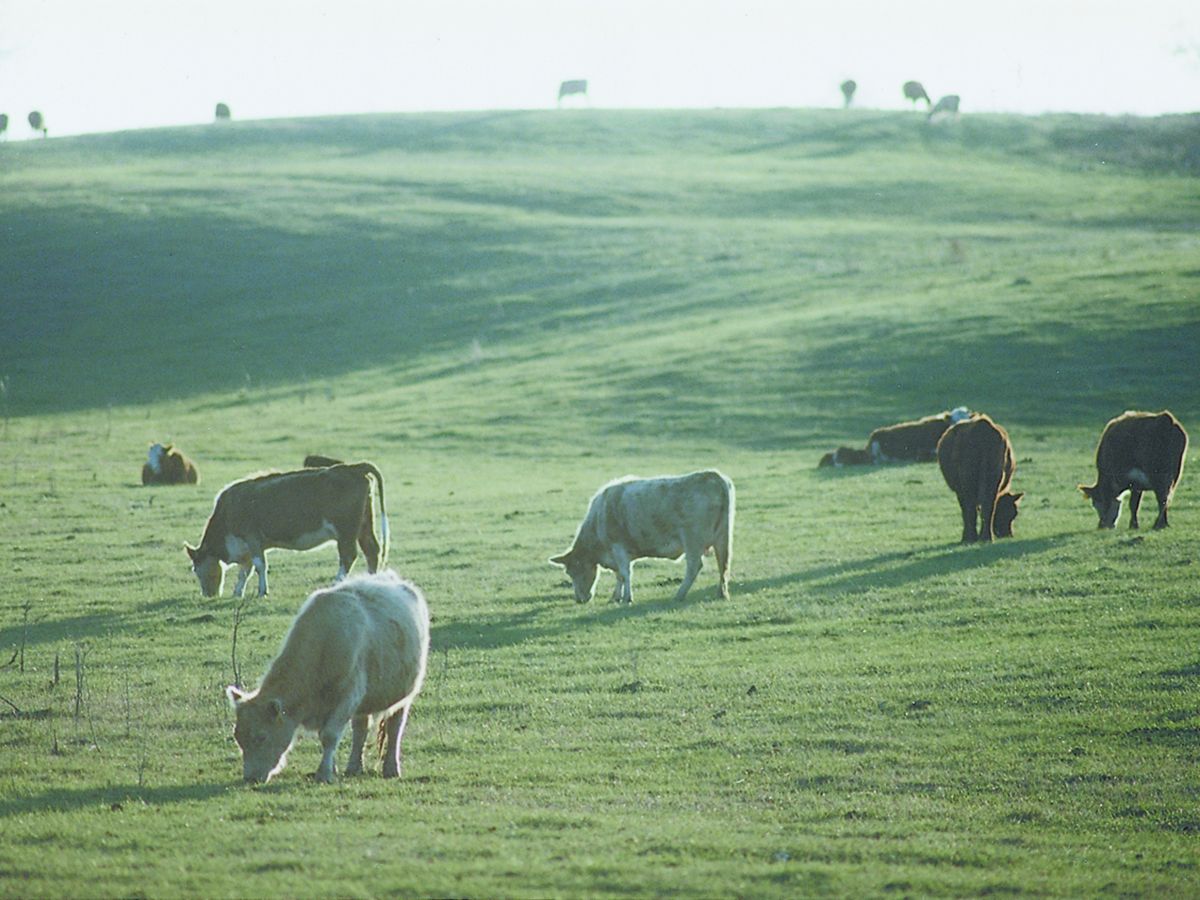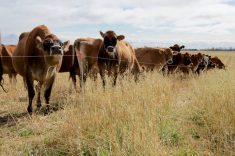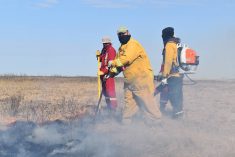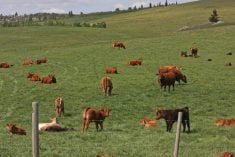SASKATOON—The wildfires that swept through parts of Alberta and Saskatchewan in the fall of 2017 were deadly and devastating.
However, they offered a unique opportunity to study how fires affect grazing management.
University of Saskatchewan researcher Eric Lamb said experts couldn’t offer good advice about when the land could withstand grazing because existing literature was contradictory.
Read Also
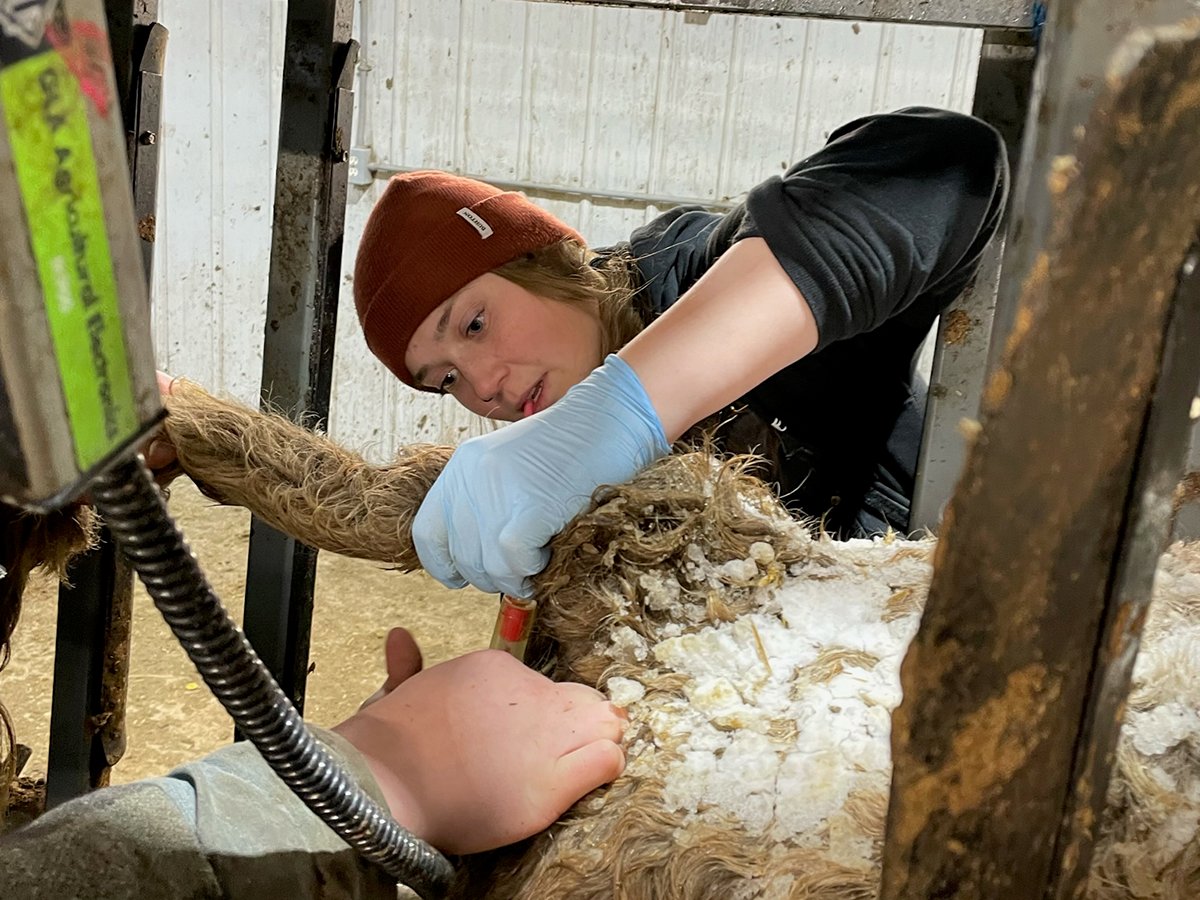
Pen riders better than tech at detecting respiratory disease in feedlot cattle, says researcher
Katrina Garneau’s recent research found that pen riders are better than technology at flagging signs of BRD in feedlot cattle.
The day after the fire, he called the Saskatchewan Cattlemen’s Association, which had his research proposal to study prescribed fire, and suggested they study the aftermath of the wildfires instead.
The five-year project to monitor grassland recovery compared stocking rates and timing of grazing using grazing enclosures.
Producers began putting their cattle on the land in the second year after the fire, although one had to graze in the first year.
“We were able to compare how fast recovery happened with grazing under light stocking rates versus maintaining no grazing for the full five years,” Lamb said.
“We were able to show that three years out productivity had recovered in burned areas to what it was in adjacent unburned spots, with some very interesting interactions with the drought.
“Interestingly, the burned areas recovered to the same levels as the unburned areas despite the drought.”
Lamb said that indicates there may have been increased resilience caused by the fire, but there is no way to know why that happened or if it would happen elsewhere because it had never before been observed in the grasslands, he said.
He said many producers were worried about invasive weeds moving in after the fire, but researchers found almost none. The odd kochia plant that appeared among the native species wasn’t an issue because it was gone by the second year, he said.
“These were really well managed grasslands. They were being managed with appropriate stocking rates prior to the fires and ultimately those grasslands are really, really resilient,” he said.
The research found there are likely no hard rules about when post-fire grazing could begin. A producer could put some animals out at a light stocking rate the first year as long as they monitor carefully. Sometimes, they have no other option.
Biomass had completely recovered in five years.
Talking about fire almost always uses the language of disaster, Lamb said, and it is so for those who lose their lives, animals and infrastructure. However, for the ecosystem, it’s a natural process.
Prescribed fire is a tool that can be used to move cattle to an area, reduce excessive litter and deal with encroachment of trees and shrubs.
Lamb said a short term hit on grass to deal with shrubs choking out the grass could be a benefit. Fire can be used to help develop a particular habitat for an endangered species.
Renny Grilz, resource management officer at Meewasin Valley Authority in Saskatoon, said there is interest in prescribed fire to reduce the chances of a wildfire such as the events of 2017.
“If you have a series of grazed and ungrazed areas, you do have that higher risk of wildland fire, but if those areas are also managed with fire as well, you have that mosaic that reduces that bigger risk,” he said.
Meewasin has used fire as a management tool for the last 35 years in its region, which includes the South Saskatchewan River Valley in and outside Saskatoon.
In 2020, the Weston Family Foundation, through its Prairie Grasslands Initiative, funded an initiative called the Canadian Prairies Prescribed Fire Exchange. The network includes communities, First Nations, producers, conservation groups, and researchers who work together on prescribed fire both in Saskatchewan and Alberta.
The exchange provides training opportunities both online and in the field, helps conduct prescribed burns and compiles research so that it can be shared.
In the former federal pasture at Spy Hill, Sask., now managed by the Association of Manitoba Community Pastures, prescribed burning is helping to deal with trees that are encroaching on the grass. Grilz said the pasture managers used to use fire but that fell by the wayside for a number of years.
“The AMCP has started using fire again to try to open up these areas to help with better distribution of cattle, reduce that tree and shrub cover and attract cattle to those areas that they’re not getting into,” he said during the Saskatchewan Beef Industry Conference.
Excessive litter buildup is also a concern that fire can help manage.
Lamb said there should be a management objective to using fire and it must be done safely.
He said fire prescriptions require specific weather conditions involving temperature and windspeed.
Contact karen.briere@producer.com


